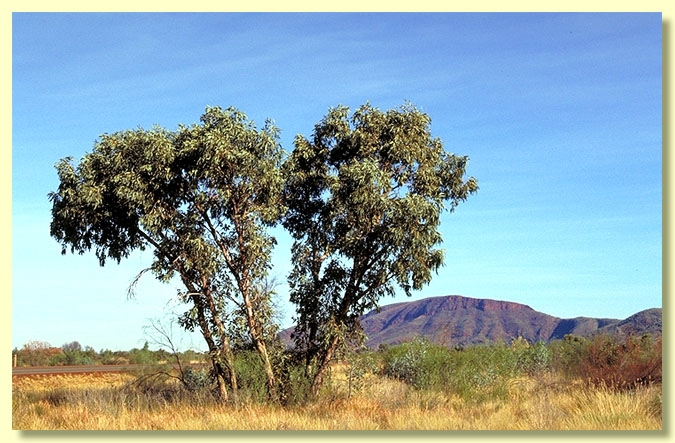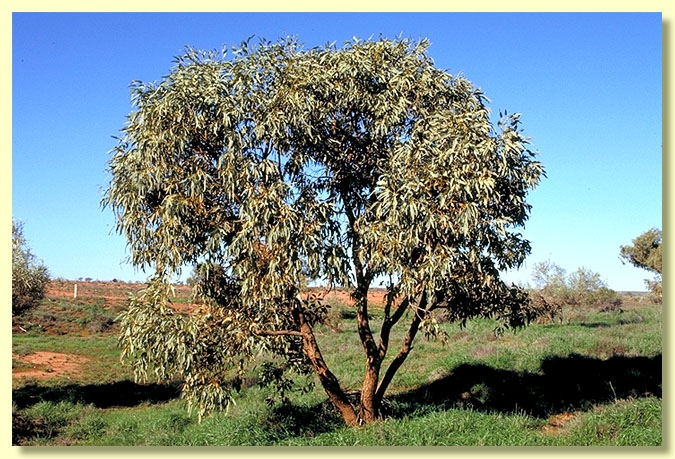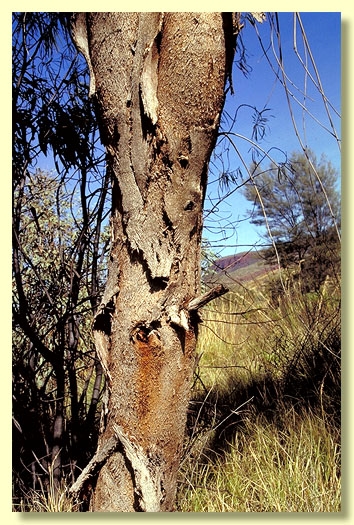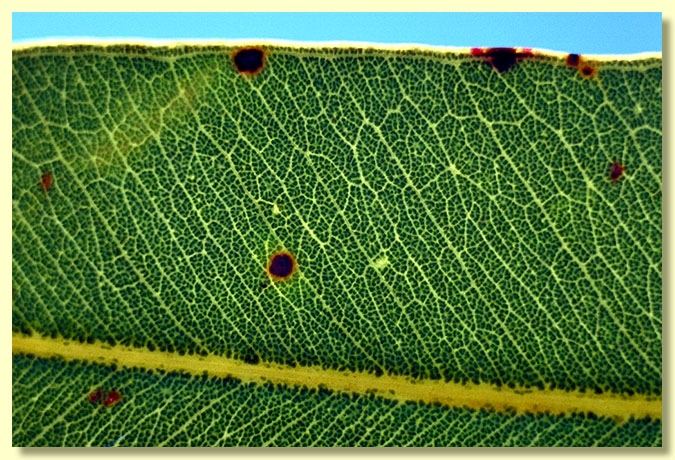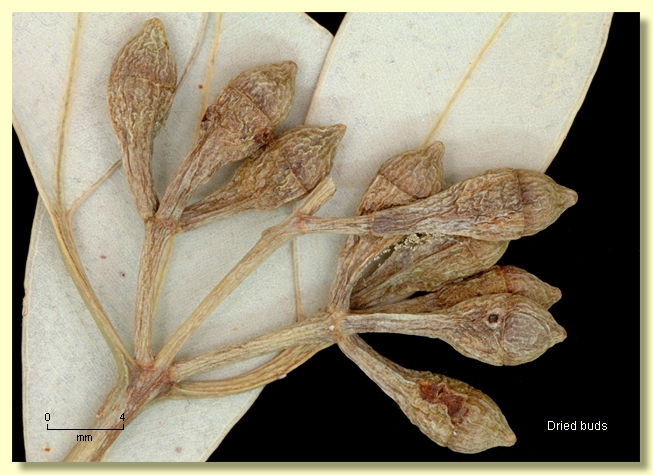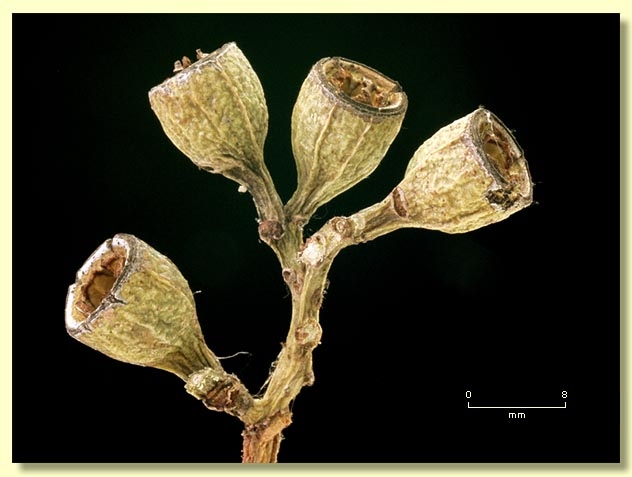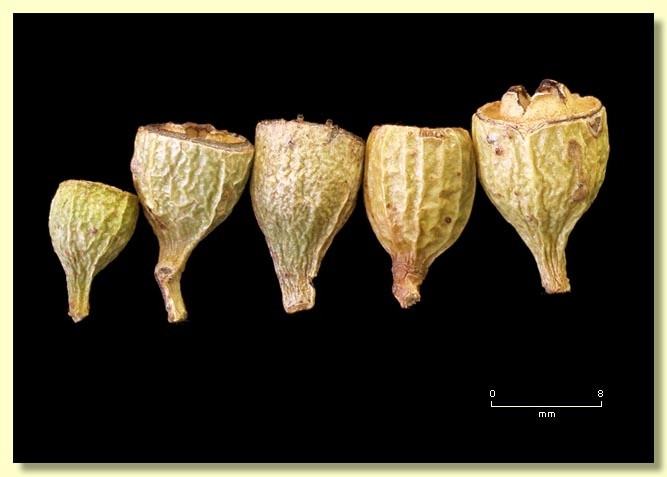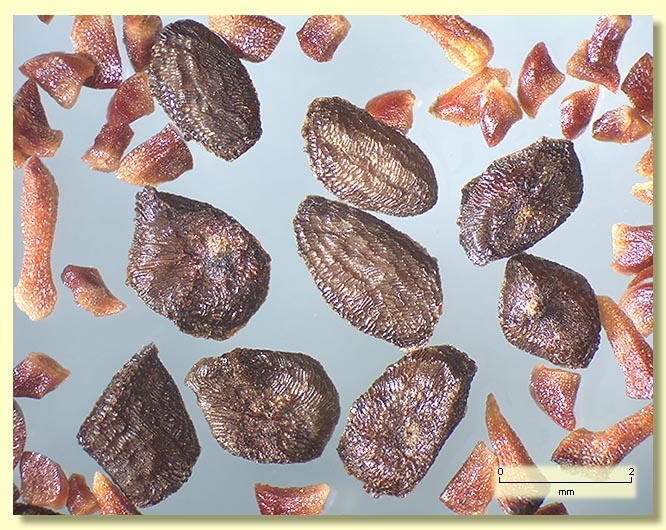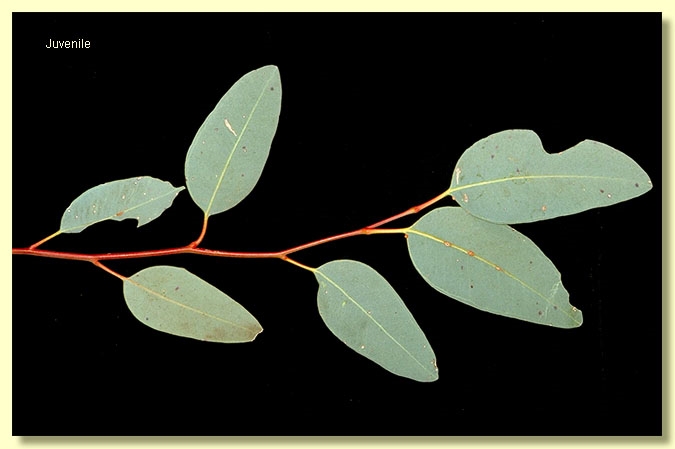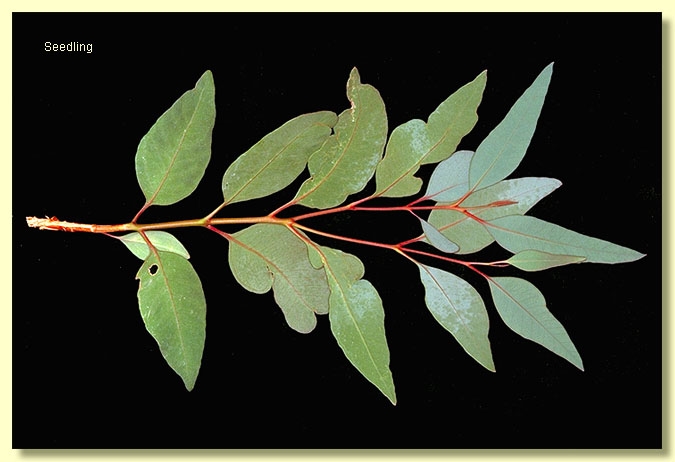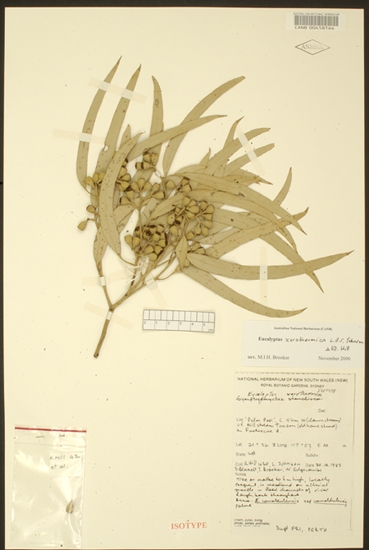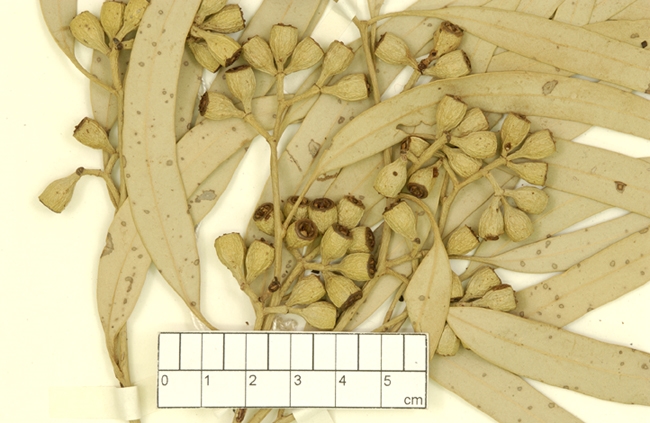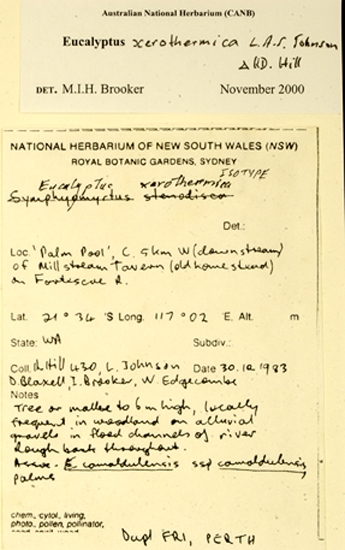Eucalyptus | Symphyomyrtus | Adnataria | Apicales | Aquilonares | Fortes
Euclid - Online edition
Eucalyptus xerothermica
Eucalyptus xerothermica L.A.S.Johnson & K.D.Hill, Telopea 8: 534 (2000).
T: Western Australia: ‘Palm Pool’, ca 5 km W (downstream) of Millstream tavern (old homestead) on Fortesque River, 30 Oct. 1983, K.D.Hill 430, L.A.S.Johnson, D.F.Blaxell, M.I.H.Brooker & W. Edgecombe; holo: NSW; iso: CANB, PERTH.
Tree or mallee to 6 m tall, rarely to 12 m. Forming a lignotuber.
Bark rough to the smallest branches, tightly held, box-type, grey-brown to creamy brown and finely fissured.
Branchlets lack oil glands in the pith; non-glaucous.
Juvenile growth (coppice or field seedlings to 50 cm): stems rounded in cross-section; juvenile leaves always petiolate, alternate, elliptical to ovate, 6.5–13 cm long, 3–6.5 cm wide, blue-green to grey-green.
Adult leaves alternate, petioles 0.9–2.7 cm long; blade lanceolate to falcate, 7.8–18 cm long, 1–2.5(3.6) cm wide, base tapering to petiole, margin entire, apex pointed, concolorous, dull, light green to grey-green or blue-green, side-veins acute to greater than 45° to midrib, reticulation dense to very dense, intramarginal vein present, oil glands apparently absent.
Inflorescence terminal compound but occasionally with some compound axillary inflorescences present also, peduncles rounded to angular, 0.3–1 cm long, buds 3 or 7 per umbel, pedicels (0)0.1–0.6 cm long. Mature buds obovoid to ovoid with four weak angles at base of bud, 0.7–0.8 cm long, 0.4–0.5 cm wide, scar present (outer operculum shed early), operculum bluntly conical to rounded, stamens irregularly flexed, all fertile, anthers adnate, basifixed, cuboid to ± globoid, dehiscing by lateral slits, style long and straight, stigma blunt, locules 4 or 5, the placentae each with 4 vertical ovule rows. Flowers creamy white.
Fruit pedicels (0)0.1–0.7 cm long, cylindrical to ± barrel-shaped or, if shorter and slightly flared at the rim, then cupular to ± obconical, 0.6–1.1 cm long, 0.6–0.9 cm wide, isodiametric to longer than wide, valves 4 or 5, disc descending or sometimes level, if level then valves exserted otherwise valves at rim level.
Seeds dark brown to black, 1.5–3.5 mm long, flattened-ovoid, dorsal surface shallowly reticulate, hilum ventral.
Cultivated seedlings (measured at ca node 10): cotyledons reniform; stems rounded to square in cross-section; leaves always petiolate (petioles to 1 cm), opposite for 4 to 7 nodes then becoming alternate, ovate to lanceolate, 4.8–9.8 cm long, 1.4–3.9 cm long, base rounded to tapering, apex pointed dull, grey-green to green.
Flowering time not recorded.
A spreading tree or robust mallee endemic to the Pilbara and North West Cape region of Western Australia, and adjacent islands. It is found with hummock grasses on a variety of substrates from ironstone hills to alluvial gravels on seasonal creeks or gullies in coastal limestone pavements. It is completely rough-barked and has a light green to bluish green crown and stout fruits.
Eucalyptus xerothermica belongs in Eucalyptus subgenus Symphyomyrtus section Adnataria (the boxes) because the buds have two opercula, ovules are in four rows, seeds are flattened-ovoid, cotyledons are reniform, and anthers are rigid on the staminal filaments. Within section Adnataria, E. xerothermica belongs to a subgroup of box species with tropical distribution, series Aquilonares subseries Fortes, having inflorescences terminal on the branchlets, adult leaves very densely reticulate and fruit that are not fragile and have valves more or less at rim level when dehisced.
Eucalyptus xerothermica is similar to the Kimberley box, E. limitaris, which has cylindrical to barrel-shaped fruit consistently longer than wide and also thinner-textured crown leaves. E. xerothermica has stouter fruit that tend to be isodiametric, and thicker, more leathery leaves, perhaps reflecting the harsher climate it endures. Further east in the Mt Isa–Cloncurry region of Queensland a related species, E. leucophylla, occurs. It has slightly smaller cupular-obconical fruit with narrower always descending disc than in E. xerothermica. The three species are closely related, and their relationship to each other, and to the Top End endemic E. patellaris, and to the two glaucous Kimberley endemics E. tephrodes and E. argillacea, needs further research.
Eucalyptus xerothermica: Greek xeros, dry and thermos, hot, referring to the Pilbara climate, where this species grows.

